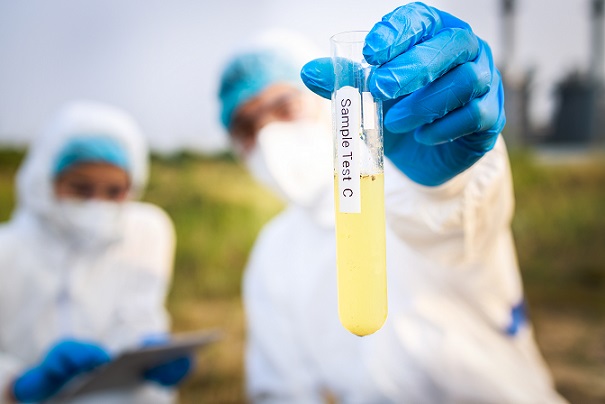Phosphorus (P), like nitrogen, is essential nutrition for all living things. Phosphate (PO4) is the most frequent type of phosphorus utilized by biological organisms, and it is crucial for the creation of DNA, cellular energy, cell membranes, and plant cell walls. But what happens if there is too much phosphorus in our natural waters? Why phosphorus removal from wastewater is a critical issue and what kind of WWTP solutions are available for it? You will get answers to all these questions in our article below. Besides that, we will introduce you to an innovative solution from Transcend Water – one of the world’s top wastewater system design companies – which recently presented biological phosphorus removal (BPR) as a new function in their Design Generator.
How does phosphorus get into natural waters and what can it cause there?
In aquatic ecosystems, phosphorus is a limiting nutrient, meaning that the amount of this nutrient available controls the pace at which algae and aquatic plants grow. When the quantity of phosphorus is right, soil microbes and vegetation can use it for proper growth. In 1986, the Environmental Protection Agency (EPA) established the recommended limits for phosphorus in the water.
Based on the recommendation phosphorus level shouldn’t exceed:
- 0.1 mg/L in streams that do not drain into reservoirs;
- 0.05 mg/L in streams discharging into reservoirs;
- 0.024 mg/L in reservoirs.
Excessive phosphorus contamination can occur as a result of leaking septic systems, inadequate farming practices, and runoff from urban areas and properties. Too high levels of phosphorus in waters boost the growth of algae and large aquatic plants, resulting in a drop in dissolved oxygen levels. This process is known as eutrophication. Besides, it can cause algae blooms, which produce toxins that are hazardous to both human and animal health.
Why is phosphorus removal from wastewater important?
Human feces and phosphorus-containing household cleaners are one of the main causes of increased phosphorus in natural waters. Therefore phosphorus removal from wastewater is critical for human safety and environmental conservation. By using the appropriate phosphorus removal treatment eutrophication, a natural process that fosters algal blooms can be avoided. Algal blooms have the potential to suffocate ecosystems, resulting in dead zones where species cannot live. It also creates further water quality issues, putting our drinking water at risk.
Currently, chemical and biological treatments are the two main techniques for phosphorus removal from domestic and industrial wastewater.
How does chemical phosphorus removal (CPR) work?
Chemical phosphorus removal includes adding metal salts to create a reaction with soluble phosphate to generate solid precipitates that can be removed using techniques like filtration and clarification. Ferric chloride, ferrous chloride, ferrous sulfate, ferric sulfate, aluminum sulfate, and sodium aluminate are the most commonly used metal salts. Chemical treatment is one of the most common techniques to remove phosphorus in order to keep its concentrations below 1.0 mg/L.
What are the disadvantages of CPR?
The most common disadvantages are the high operating expenses and the risk of unreliable supply of chemicals. Besides, chemical addition might limit struvite formation, which can develop into an issue if a WWTP converts to a biological phosphorus removal system and more phosphorus gets in the digester. Besides that, the CPR method comes with special storage requirements while increasing sludge production to 30%.
What do you need to know about biological phosphorus removal?
Biological phosphorus removal (BPR) was first utilized in the late 1960s at a few water resource recovery plants. To remove phosphorus from wastewater, numerous engineers created particular versions of the methods by the 1970s. In the late 1980s, regulatory agencies began to require effluent phosphorus limits as nutrients in receiving streams increased. Since then numerous facilities have made advancements that included BPR.
How does BPR work?
Phosphorus-accumulating organisms (PAOs) can take up the organic substrate in anoxic to anaerobic circumstances using the BPR technique. Under anaerobic circumstances, bacteria release phosphorus into wastewater to gain energy for the assimilation of the organic substrate into the microbial cell. The ingested organic substrate is transformed into energy and cell mass after aerobic conditions are restored. This permits the bacteria to absorb the phosphorus they require to survive.
What are the main benefits of biological phosphorus removal?
- Saves on chemical addition
- Embodies P into the sludge to ease its removal through WAS or filtration.
- Less sludge generation compared to CPR
Modern WWTP solution for efficient P removal
If you are currently deconstructing, remodeling, renovating, or even building a new WWTP we recommend a solution to assist you to get the job done faster by automating 90% of your processes. Meet Transcend Design Generator (TDG) which is currently the world’s most advanced software design tool for creating preliminary designs for WWTPs. TDG provides you with absolute flexibility and control over the design in a fraction of the time.
The Design Generator has been recently upgraded with a new function and now supports biological phosphorus removal (BPR) design as well. Check out Transcend Water’s website to learn how.



